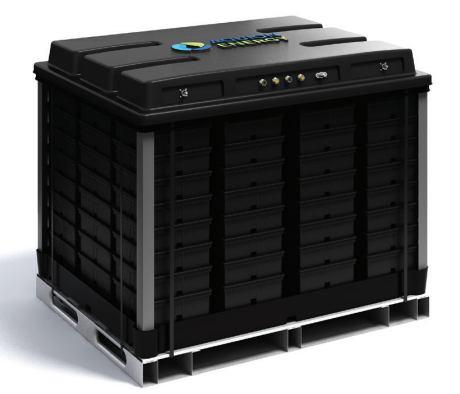The PV+storage system will be installed in the third quarter, in cooperation with regional utility Kyushu Electric Power, according to an online statement.
Paris-based energy-management specialist Schneider will provide its Conext XW+ controller, which is a three-phase hybrid inverter with grid-tie functionality and dual AC power inputs, housed within a single unit.
PV-generated electricity will be stored in Pittsburgh-based Aquion’s Aspen 48M-25.9 battery, a scalable saltwater storage solution based on the company’s proprietary Aqueous Hybrid Ion technology.
”As more utilities and renewable energy developers around the world search for a safe and truly renewable alternative to lithium-ion storage solutions, we see a significant opportunity for continued expansion into global markets for our Aspen battery series,” said Aquion chief executive Scott Pearson.
Aquion says the non-flammable, non-explosive unit is designed to operate for long periods of time to store PV-generated electricity in stationary residential, off-grid, microgrid and grid-scale projects.
The companies will design the project — to be developed with Osaka-based PV installer EIWAT Solar — as a scalable model for future installations.
Interest in utility-scale storage applications — paired with both solar and wind in a range of configurations — has been rising for the past several years in Japan.
Popular content
In 2013, Sumitomo Electric Industries was one of the first companies to experiment with storage, when it was selected by Japan’s Ministry of Economy, Trade and Industry to install a 60 MWh vanadium redox flow battery bank on the island of Hokkaido.
In early 2014, the Sumitomo group — in cooperation with Nissan Motor and the Ministry of Environment — paired used lithium-ion vehicle batteries with a 10 MW solar project in Osaka.
In 2015, Hitachi and several of its partners started building a 1.5 MW hybrid storage system on the isolated volcanic island of Izu Oshima, about 100 kilometres south of Tokyo.
Mitsubishi Electric also revealed plans in 2015 to install NGK Insulators’ sodium sulphur batteries as part of a 50 MW project in Fukuoka prefecture, southwestern Japan.
In early 2016, Toshiba began operating a 40 MW-40 MWh storage system to regulate output from solar and wind projects in Fukushima prefecture.
And a unit of regional utility Tokyo Electric Power (Tepco) — in cooperation with French battery supplier Saft — started working on a PV-wind storage project in 2016 on the remote island of Niijima.
This content is protected by copyright and may not be reused. If you want to cooperate with us and would like to reuse some of our content, please contact: editors@pv-magazine.com.


By submitting this form you agree to pv magazine using your data for the purposes of publishing your comment.
Your personal data will only be disclosed or otherwise transmitted to third parties for the purposes of spam filtering or if this is necessary for technical maintenance of the website. Any other transfer to third parties will not take place unless this is justified on the basis of applicable data protection regulations or if pv magazine is legally obliged to do so.
You may revoke this consent at any time with effect for the future, in which case your personal data will be deleted immediately. Otherwise, your data will be deleted if pv magazine has processed your request or the purpose of data storage is fulfilled.
Further information on data privacy can be found in our Data Protection Policy.